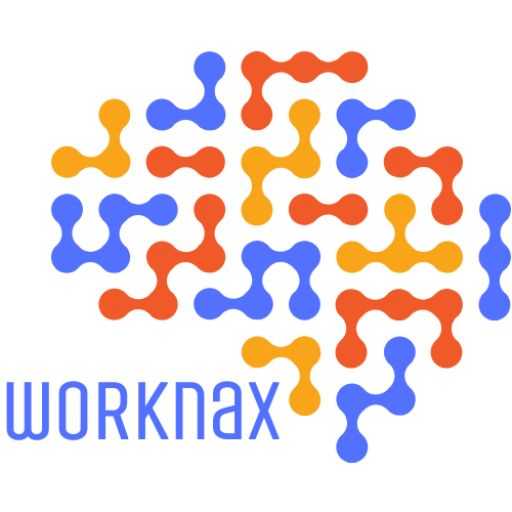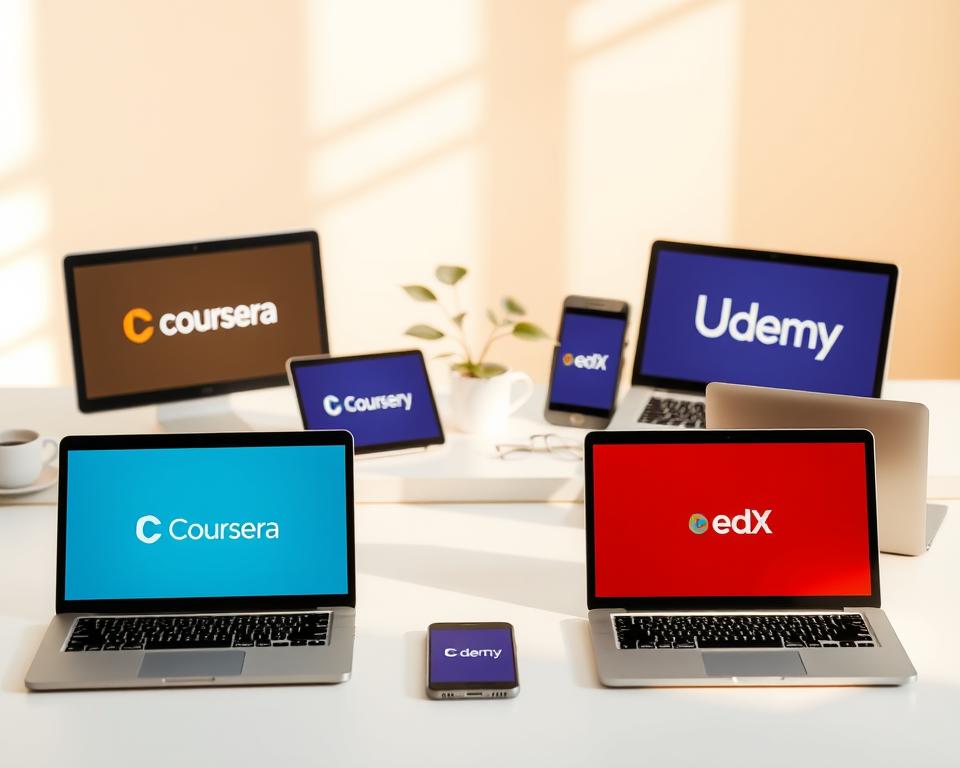Anúncios
Você já se perguntou por que alguns cursos parecem estagnados enquanto outros levam a um progresso constante? Este guia começa com conselhos claros e úteis sobre erros de aprendizagem digital e por que elas ainda são importantes hoje.
Você encontrará dicas práticas que aprimoram sua experiência sem prometer milagres. Este artigo é para estudantes, profissionais em processo de qualificação e equipes de e-learning que buscam progresso constante e oportunidades reais.
Abordamos hábitos, escolhas de design instrucional, tecnologia, acessibilidade e mensuração. Conte com conselhos simples e baseados em pesquisas que você pode usar em qualquer ambiente ou plataforma educacional.
Pense neste artigo como um companheiro útil. Você verá exemplos e listas de verificação, não uma fórmula única e sensacionalista. Avance no seu próprio ritmo, busque mentores quando necessário e tente pequenos ajustes que se somam ao longo do tempo.
Reflita sobre sua abordagem atual agora para que você possa identificar vitórias rápidas logo no início e ganhar confiança em sua jornada de e-learning.
Introdução: Por que os erros de aprendizagem digital ainda são importantes na educação online de hoje
Aprendizado online muitas vezes confunde as pessoas de maneiras simples e repetitivas que tornam lento progresso.
Em termos simples, esses são erros comuns de abordagem ou hábito que tornam o tempo de estudo menos eficaz. Lidar com eles logo no início protege sua confiança e ajuda a manter o ritmo.
O e-learning flexível amplia o acesso, mas também traz novos desafios, como autogestão e dependência tecnológica. Muitas instituições recomendam planejamento, bloqueio de distrações e boa etiqueta para manter os estudos no caminho certo.
Este guia não promete sucesso instantâneo. Em vez disso, você encontrará etapas práticas sobre clareza de conteúdo, hábitos de estudo, ciclos de feedback e recursos de apoio que pode experimentar esta semana. Os exemplos serão mapeados para cenários reais do curso, para que você possa adaptá-los aos seus objetivos.
O que “erros a evitar” significa para o seu progresso e confiança
- Defina deslizes comuns em termos simples para que você os identifique rapidamente.
- Mostre por que pequenas mudanças consistentes melhoram o sucesso a longo prazo.
- Inclua lembretes sobre comunicação inclusiva e informações acessíveis para todos os alunos.
Erros de aprendizagem digital que você deve observar desde o primeiro dia
Um plano curto e realista sempre supera intenções ambiciosas, mas vagas.
Comece com metas claras e um plano simples que você possa manter
Escolha de 2 a 3 metas focadas em resultados que definam o que você fará. Por exemplo: “Explique X em três frases” ou “Complete dois conjuntos de prática”. Elas orientam seu estudo e tornam o progresso visível.
Transforme cada meta em um plano semanal. Combine uma meta com um recurso e um bloco de tempo fixo. Mantenha os mesmos intervalos a cada semana para reduzir a fadiga de decisão.
- Separe o que é preciso saber do que é bom saber para manter seu plano enxuto.
- Use um rastreador de curso leve: data, duração da sessão, perguntas, próxima ação.
- Execute um pré-teste rápido para pular material familiar e economizar tempo.
Lista de verificação rápida: Os objetivos estão claros? Os marcos estão definidos? Quando você avaliará o progresso? Faça essas perguntas semanalmente e ajuste a carga de trabalho antes que ela se torne esmagadora.
Recorra a um mentor ou tutor se as metas parecerem vagas. Conquistas iniciais criam impulso e tornam o aprendizado contínuo mais fácil de manter.
Hábitos que silenciosamente atrapalham seu aprendizado: tempo, foco e motivação
Rotinas simples de foco, pausas e tecnologia geralmente fazem a maior diferença. Pequenos hábitos se acumulam. Eles protegem seu tempo de estudo ou prejudicam seu progresso.
Noções básicas de gerenciamento de tempo: bloqueie distrações e trabalhe em partes
Faça uma breve auditoria semanal do seu tempo para identificar quando sua atenção se desvia. Use bloqueadores ou uma lista de tarefas para remover desperdícios de tempo óbvios.
Tente dividir em partes: Blocos de foco de 25 a 50 minutos com intervalos de 5 a 10 minutos. Isso protege a atenção e reduz o esgotamento.
Projete seu ambiente: reduza o ruído, estabeleça uma rotina de estudos e escolha um Wi-Fi confiável
Escolha um local tranquilo e uma rotina consistente. Teste o login, o áudio e os uploads da sua plataforma antes das sessões ao vivo.
Uma internet confiável é importante. Tenha locais de backup ou um ponto de acesso móvel à mão para que problemas tecnológicos não atrapalhem seus estudos.
Mantenha-se motivado: pequenas vitórias, responsabilidade e ritmo realista
Comemore pequenas vitórias. Encontre um parceiro responsável e controle o ritmo das tarefas para que as metas pareçam realizáveis. Certifique-se de que seu plano deixe uma margem de manobra para atrasos na vida e na tecnologia.
Comunicação online respeitosa: nomeação de arquivos, tom e participação
Identifique os arquivos com clareza, escreva mensagens concisas e evite letras maiúsculas ou sarcasmo. Faça perguntas diretas que impulsionem as discussões.
- Lista de verificação pré-estudo: silenciar o telefone, fechar as abas, preparar anotações, encher a garrafa de água, definir uma meta clara.
- Hábitos saudáveis de tela: pausas para os olhos, verificações de postura e limite o uso de telas antes de dormir.
- Peça ajuda cedo quando as instruções ou expectativas não forem claras.
Armadilhas do design instrucional que prejudicam a compreensão e a retenção
As escolhas de design moldam discretamente o quão bem os alunos lembram e aplicam o que estudam.
Objetivos pouco claros e conteúdo desalinhado
Se os resultados forem vagos, você e seus alunos perderão tempo com informações erradas.
Exemplo: Em vez de “Entenda X”, use “Resuma X em três etapas” para orientar o conteúdo e a avaliação.
Muito ou pouco conteúdo: evite sobrecarga cognitiva
Um slide ou página deve abordar uma única ideia. Se uma tela apresentar três ideias, divida-a.
Faça um teste rápido: um aluno consegue agir com base nas informações após uma única leitura? Se não, simplifique.
Interatividade que agrega valor vs. cliques que distraem
Escolha interações que exijam reflexão — cenários ramificados, pontos de decisão ou reflexões curtas.
Evite cliques de preenchimento que apenas avançam as páginas; eles aumentam o tempo sem aumentar a retenção.
Avaliações justas e úteis em vez de testes do tipo “pegadinha”
Escreva perguntas que testem a compreensão prática, sem usar palavras complicadas. Use cenários realistas.
Ofereça verificações formativas e feedback claro para que os alunos vejam onde melhorar.
Navegação bloqueada que frustra os alunos
Caminhos bloqueados geralmente reduzem a autonomia e aumentam as taxas de abandono. Em vez disso, use pré-testes ou pulos opcionais.
Forneça uma faixa "precisa saber primeiro" e camadas mais profundas opcionais para aqueles que querem mais.
- Rubrica: alinhamento de objetivos, densidade de conteúdo, valor de interatividade, perguntas justas, navegação clara.
- Mantenha o design visual simples e consistente para direcionar a atenção para informações importantes.
- Adicione materiais de apoio ou listas de verificação para que os alunos possam aplicar as habilidades após o curso.
Engajamento da maneira certa: conteúdo de qualidade em primeiro lugar, recursos visuais e mídia com propósito
Um bom engajamento começa com conteúdo claro e recursos visuais significativos, não com extras chamativos. Coloque a ideia principal em termos simples e, em seguida, adicione mídias que esclareçam ou modelem essa ideia.
Use vídeos, gráficos e cenários para dar suporte — e não ofuscar — o conteúdo
Priorize texto claro e exemplos antes de adicionar um clipe ou gráfico. Use vídeos curtos apenas quando eles mostrarem um processo melhor do que palavras.
Dica de storyboard: um ponto de aprendizagem, um cenário, uma chamada para ação. Adicione legendas e uma transcrição para que a mídia seja escaneável e inclusiva.
Atinja o nível de desafio certo para aumentar a retenção a longo prazo
Comece com a prática guiada e, em seguida, adicione complexidade para que o aluno se esforce sem pânico. Os cenários devem espelhar decisões reais para que os alunos pratiquem o julgamento, não a recordação.
- Mantenha a mídia compacta: tente ter menos de 6 a 8 minutos por vídeo.
- Substituir decoração: use diagramas ou recursos visuais passo a passo que reduzam a carga cognitiva.
- Envolva-se cuidadosamente: prompts e perguntas de reflexão que conectam ideias ao trabalho.
Nota final: Faça com que cada elemento mereça o seu lugar. Essa abordagem aumenta o engajamento da maneira certa e promove melhor retenção no design de e-learning.
Tecnologia, acessibilidade e qualidade que você não deve ignorar
Sistemas confiáveis Mantenha a atenção na aula, não nas interrupções. Planeje conexões lentas e a variedade de dispositivos com antecedência.

Ferramentas confiáveis e largura de banda: planeje backups para problemas de conectividade
Teste a largura de banda, o áudio e a câmera antes das sessões ao vivo. Liste três locais de backup ou pontos de acesso para apresentadores e alunos.
- Pré-verificações: teste de velocidade, verificação do microfone e pré-visualização da câmera.
- Locais de backup: laboratório do campus, biblioteca pública, ponto de acesso móvel.
- Publique programas mínimos e requisitos de dispositivos para que ninguém fique surpreso.
A acessibilidade é importante: siga os princípios básicos do WCAG para incluir todos
Inclua a acessibilidade como parte de um trabalho de qualidade. Use contraste de cores e navegação por teclado suficientes. Adicione texto alternativo e transcrições.
- Legendas e transcrições para áudio e vídeo.
- Rótulos claros e posicionamento consistente dos botões para melhor navegação.
- Linguagem simples para que mais alunos possam acompanhar o conteúdo.
QA antes do lançamento: corrigir erros de digitação, problemas de áudio e links quebrados
Execute uma verificação de qualidade leve. Verifique a ortografia, os links, a reprodução de mídia e as legendas.
- Compacte a mídia para equilibrar a qualidade e as taxas de dados comuns.
- Documente erros comuns e correções para acelerar correções futuras.
- Faça uma breve pesquisa de prontidão tecnológica para identificar riscos antecipadamente.
Certificar-se Acessibilidade e controle de qualidade são tarefas programadas, não de última hora. Tecnologia sólida e acesso claro mantêm o foco no aprendizado e elevam a qualidade do curso.
Medir, iterar e dar suporte ao aprendizado contínuo
Coletar feedback claro e oferecer recursos de acompanhamento ajuda seu curso a continuar útil depois de terminar.
Colete feedback rápido. Faça pesquisas curtas de pulso com perguntas focadas. Pergunte sobre clareza, ritmo e uma mudança que eles recomendariam.
Etapas práticas pós-curso
Compartilhe listas de verificação, modelos e auxílios de tarefas curtos para que os alunos possam aplicar as habilidades no trabalho.
- Monitore as taxas de conclusão, os padrões de tentativas e repita as visitas para detectar atritos.
- Use ferramentas leves de análise e marcação de feedback para que os insights sejam fáceis de compartilhar.
- Programe revisões trimestrais para remover ou atualizar conteúdo e exemplos desatualizados.
Processo de iteração simples: coletar dados, priorizar correções, atualizar conteúdo e notificar os alunos sobre alterações.
- Priorize correções por impacto no desempenho.
- Execute uma revisão por pares para verificar o design e a precisão antes de publicar.
- Use uma lista de verificação do que atualizar: precisão, relevância, acessibilidade, links quebrados.
Certificar-se Os alunos sabem onde obter ajuda após o curso — fóruns, horários de atendimento ou sessões de mentoria. A iteração constante gera confiança e aumenta o impacto a longo prazo.
Conclusão
Uma pequena mudança de hábito ou design geralmente proporciona ganhos constantes ao longo de meses. Mantenha os objetivos claros, crie o conteúdo do tamanho certo e permita que os alunos escolham uma navegação simples para que a atenção permaneça no trabalho que importa.
Concentre-se em avaliações justas, recursos úteis pós-curso e design consistente para aumentar a retenção e o desempenho. Torne o controle de qualidade e a acessibilidade etapas rotineiras para que a qualidade permaneça alta ao longo de anos de atualizações.
Escolha uma ou duas melhorias para esta semana: Experimente um módulo mais curto, adicione um check-in ou convide um mentor para dar feedback. Acompanhe os resultados, refine o processo e conte com programas ou especialistas quando precisar de habilidades mais aprofundadas.
Há mais de uma maneira de aprender. Seu sucesso cresce com ajustes constantes e ponderados — não com condições perfeitas. Guarde recursos úteis e peça conselhos a colegas ou instrutores quando quiser manter o ritmo.



